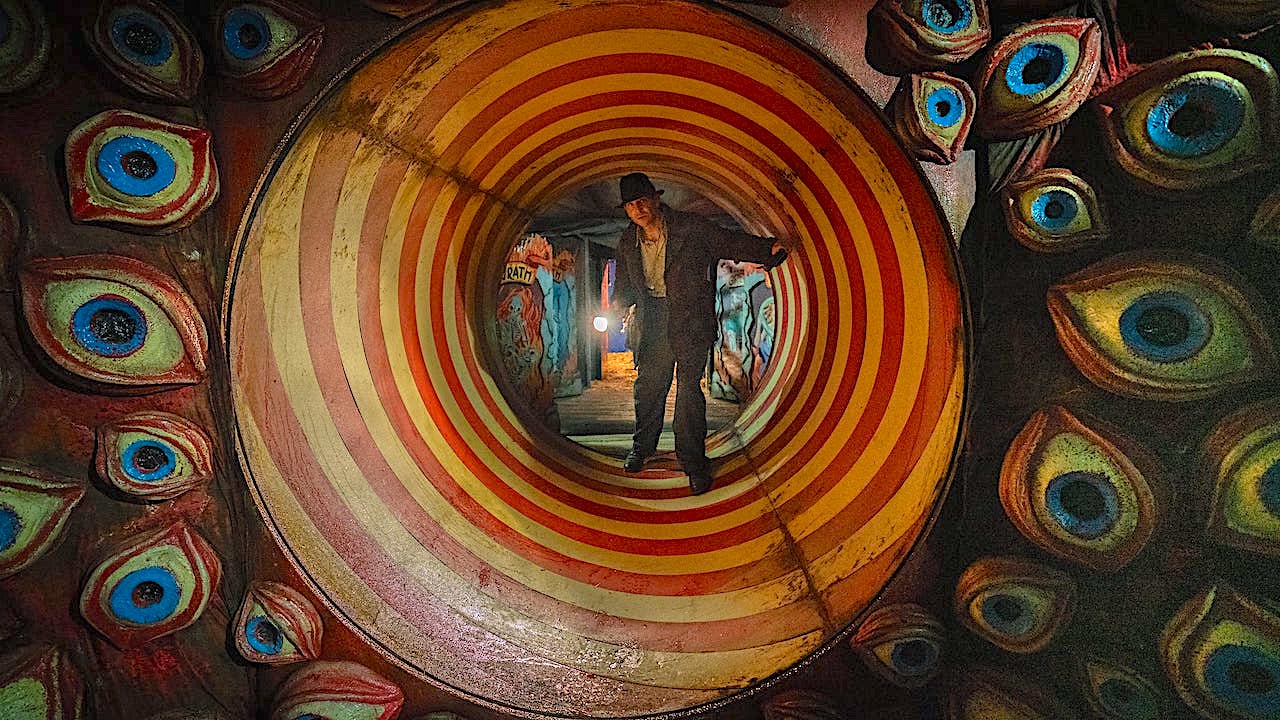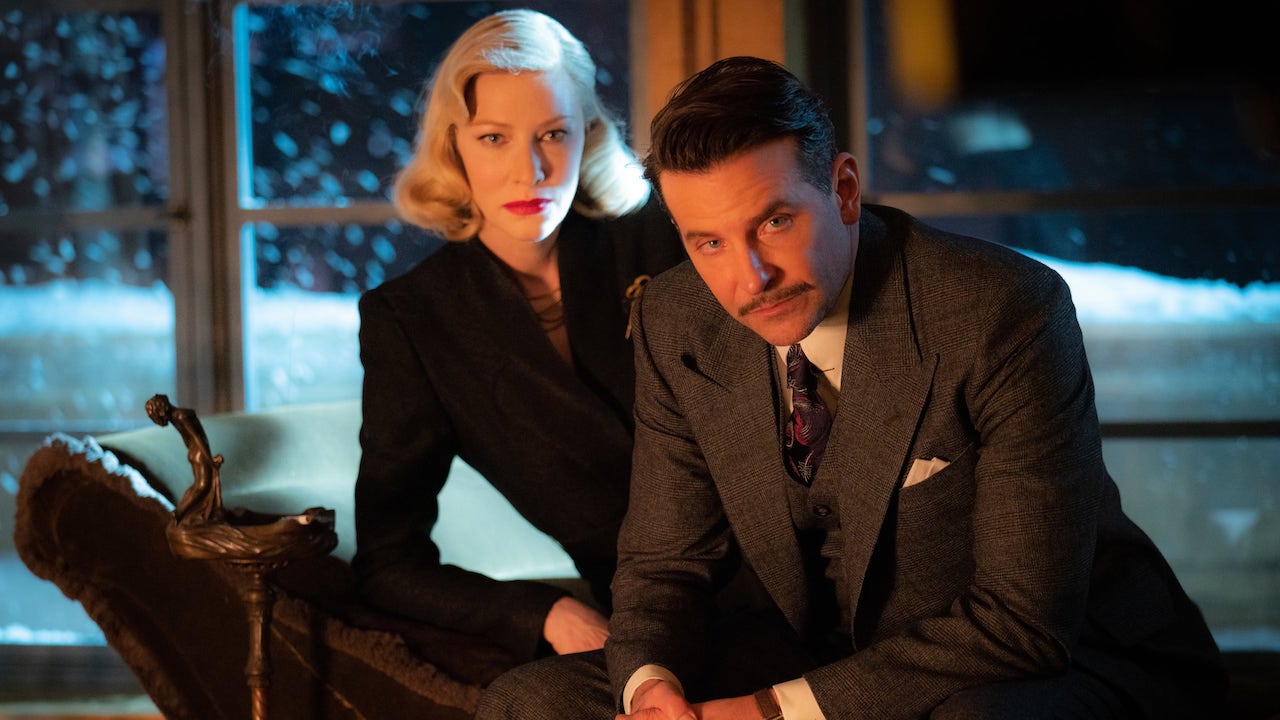Carny noir Nightmare Alley cements Guillermo del Toro as our finest film fantasist

Nightmare Alley holds a funhouse mirror up to its stellar ensemble cast, revealing avaricious inner monsters. Travis Johnson singles out Bradley Cooper’s especially evil protagonist.
Alfred Hitchcock, in conversation with Francois Truffaut, insisted that audiences can have sympathy for the villains in films. Using his own Psycho as an example, the master of suspense held forth that if we see a crime being committed on screen, at least some part of us aligns ourselves with the perp and wants them to get away with it. With his latest offering, Mexican fantasist Guillermo del Toro tests this theory to near destruction.
Based on the 1946 novel by William Lindsay Gresham and previously filmed by Edmund Goulding with Tyrone Power in 1947, Nightmare Alley follows the fortunes of drifter and grifter Stanton Carlisle (Bradley Cooper), who flees the bleak Midwest and his own dark past to find himself on the sideshow circuit, taking lowly jobs among the carnival barkers, sideshow acts and freaks.
It’s tough work, but at least he’s not a geek—a dissolute drunk pretending to be a genetic throwback and biting the heads off chickens to the fascinated horror of the crowd. Besides, Stan is a smart, charming guy with no small amount of ambition. He learns mentalism and cold reading—the art of discerning someone’s secrets at first glance—from old carny couple Pete and Zeena (David Strathairn and Toni Collette), and romances fellow carnival performer Molly (Rooney Mara).
It isn’t long before Stan and Molly have their own act and are grifting New York elites as “The Great Stanton” and his lovely assistant. Stan has found success—but then psychologist Lillith Ritter (Cate Blanchett) enters his life, and the possibility of scamming her rich clients using her private notes and Stan’s skills is too tempting to resist…

That’s a lot of plot synopsis, and it’s really just the bare essentials—Nightmare Alley sprawls, from the gutters and overpasses of the underclass to the boardwalks of the carnival, to Park Avenue and the art deco palaces of the fabulously wealthy and morally bankrupt. Although it must be said that in the film’s moral universe, almost everyone is a fallen soul—a shill or a grifter, a predator or a patsy.
The ensemble cast—which also includes Willem Dafoe, Ron Perlman, Richard Jenkins, Mary Steenburgen, Clifton Collins Jr, Jim Beaver, Tim Blake Nelson, and Holt McCallany—are for the most part a rogues’ galley of the desperate, deranged and dangerous. And as ever in del Toro’s filmography, the most freakish characters to normie eyes are not the most depraved—the real monsters hide their evil behind dapper patter and seductive smiles.
Which brings us to Cooper’s Stanton, one of the most fascinating and evil protagonists in cinema since…well, if we’re going to stay in film noir’s broad church, Linda Fiorentino’s Bridget in 1994’s The Last Seduction. Stan is avarice made flesh, and it is never less than compelling to see how far he will go to climb the ladder of success. We recognise his hunger, and we know that nothing can sate it—there is no final destination, only the next rung matters.
In a cast not short of incredible actors, Cooper’s performance is utterly arresting, and watching him gradually shed layers of civility and protective camouflage until he stands, revealed, as his true monstrous self is a journey that would do Dante proud.

Yet never has monstrosity looked so beautiful. Del Toro, working with cinematographer Dan Laustsen and production designer Tamara Deverell, has created a gorgeous phantasmagoria in which this funhouse fable plays out. Nightmare Alley never shoots for realism in its presentation, and we’re never under the impression that we’re watching anything other than a fiction, but that’s the point: like the works of del Toro’s beloved Symbolist painters, the bizarre, outré, and ‘unrealistic’ elements signify deeper truths. And if you don’t want to look deeper, it’s all so pretty you can just groove on the aesthetic—Blanchett’s gilded art deco office is worth the ticket price alone.
There is no more singular and distinct voice working in mainstream cinema than Guillermo del Toro right now, and Nightmare Alley might be the most thorough explication of his obsessions and themes yet. This is not a film that will make converts, and that’s okay. What it is, is a del Toro flick through and through: a macabre, mystical, carnival ride through a world of beautiful monsters and monstrous humans that reflects our own moral crises back to us like a funhouse mirror.




















